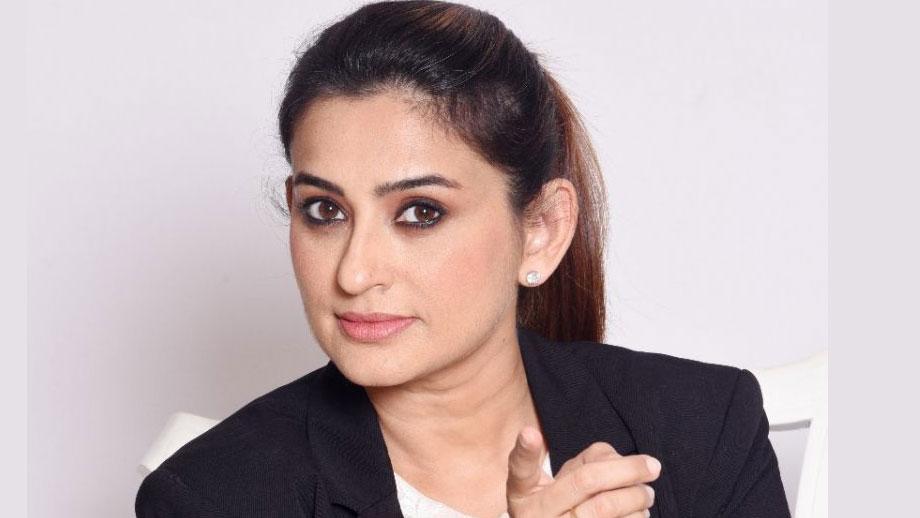Smita Bansal Reflects on the Shifting Landscape of Indian Television
Veteran actor Smita Bansal, known for her compelling performances on the small screen, recently opened up about how much the television industry has changed since she began acting nearly 30 years ago. With her show Bhagya Lakshmi wrapping up after a commendable four-year run, Bansal shared her thoughts on the enduring appeal of long-form storytelling, changes in on-set work culture, and why being open to taking risks has paid off in her career.
“If Characters Are Relatable, the Show Works”
The daily soap era may seem like a bygone phase for many viewers, especially in a world dominated by web series and video-on-demand platforms. But Bansal believes that storytelling on television still holds strong—when done right.
“Television is ruled by the writers. As actors, we come in much later. I can only say that if the characters are relatable and the emotions are strong, the show works. There surely needs to be a connection between us (characters) and the audience,” she said.
Her nostalgia over Bhagya Lakshmi is unmistakable. The show wasn’t just another fleeting attempt at grabbing TRPs—it resonated. In an age where most shows vanish within months, its longevity speaks volumes.
Timeline of Events
- 2019: Bhagya Lakshmi begins airing, with Bansal playing a key role.
- 2023: The show ends after completing a successful four-year run.
- 2024: Bansal reflects on the industry’s changing dynamics in a candid interview.
An Industry Shift: The Generational Gap on Sets
Bansal paints a detailed picture of how working conditions in television sets have undergone a sea change. Earlier, actors were accustomed to spending the entire day—and sometimes late into the night—on set, committed to finishing sequences with little regard for hours or boundaries. Not anymore.
“Back in the day, we would be on set all day and sometimes even night. Now, younger actors want fixed working hours. They want to do multiple projects, like web series and music videos. The concentration span is shorter; everything has to be fast-paced for them,” she explains candidly.
Her statement strikes a chord with many industry veterans who’ve seen the lines between mediums blur, and entered an era where flexibility, efficiency, and speed dominate creative choices.
Comparison Table: Then vs Now – Work Style of TV Actors
| Aspect | Then (Early 2000s) | Now (2020s) |
|---|---|---|
| Work Hours | 12-16 hours not unusual | Demand for fixed 8-10 hour shifts |
| Project Focus | One daily soap at a time | Multiple formats: TV, web, short films |
| Rehearsals | More direction, fewer re-takes | Quick takes, digital editing reliant |
| Attitude Towards Roles | Typecasting accepted | Preference for diverse, shorter roles |
Playing a Mother Didn’t Break Her Spirit
One of the more interesting aspects of Bansal’s career is her willingness to take on roles that some might shy away from. It’s often assumed that once an actor plays the role of a mother—especially at a young age—it might pigeonhole them. Bansal disagrees.
“I started getting offers for roles of a mother after Balika Vadhu. The show was so popular, and we received so much love that it didn’t matter to me. I was playing the mother of a 10-year-old, and it was organic,” she revealed.
She believes adapting to the script’s needs without holding on too tightly to image preservation has helped her stay in demand, without needing to constantly chase relevance.
Community Response to Her Comments
Industry peers and fans alike have reacted warmly to her insight. Her frank and grounded comments have brought back memories for many long-time viewers who associate her with emotionally resonant performances and compelling maternal roles.
“You can feel she speaks from a place of experience—there’s no bitterness, just reflection,” writes one fan on an entertainment forum. Others echoed similar sentiments, appreciating her honesty about the present-day pace of the industry.
Among younger actors, there’s admiration for her realist approach. One actor in his early twenties shared, “Smita ma’am is someone who has seen what we’re walking into. We want balance, but she made it through pure dedication. That’s worth remembering.”
Rooted in Reality, Yet Open to Evolving
Despite pointing out how newer entrants in the industry often look for more structured schedules and varied content formats, Bansal isn’t dismissive. In fact, she sees their professionalism as a strong change—even if the process they follow feels different from her early days.
“I do see more professionalism now, which is a good thing,” she admits, giving credit where it’s due.
What’s Next?
After decades in television, what lies ahead for Smita Bansal? Right now, she’s choosing to stay selective. Choosing scripts that speak to her rather than jumping into quick projects.
“I’ve never picked up shows just to stay relevant, thus I have always got meaningful work,” she says quietly but confidently.
That discernment may very well be her secret. Even as trends shift and platforms multiply, actors like Smita Bansal remind us that dedication, adaptability, and an honest approach to storytelling still matter. Perhaps now more than ever.
For viewers and fellow professionals alike, her journey remains not just inspiring—it’s instructive. You don’t have to chase the spotlight if you’re already part of stories that people remember. And Bansal clearly knows how to choose them.

